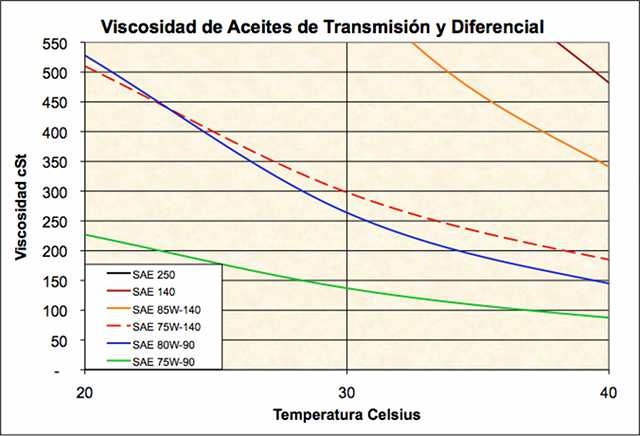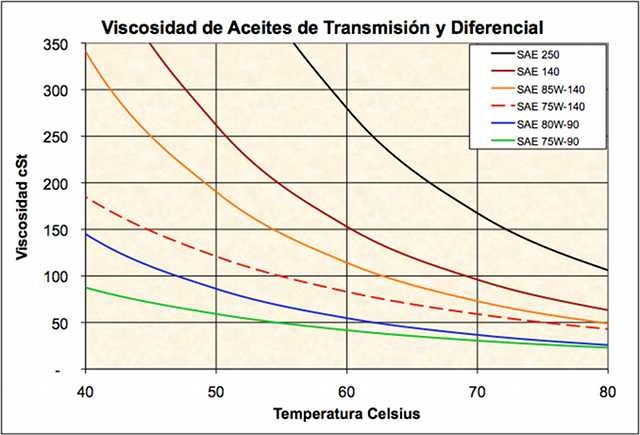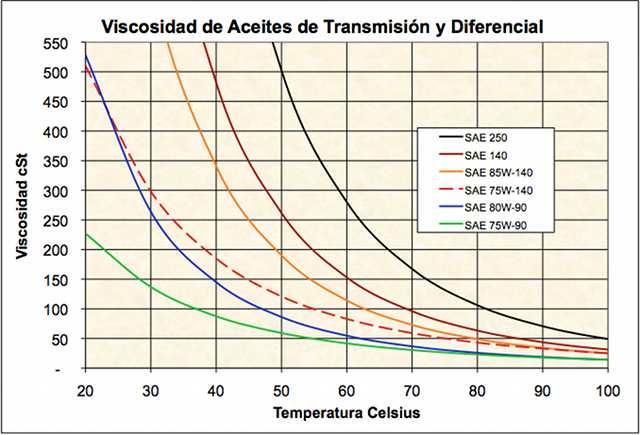Transmission and Gear Oil Viscosities
A comparison between different transmission or gear oil viscosities at various temperatures
Note: SAE 250 and SAE 140 are both too viscous for any vehicle fabricated in the last 50 years.
This graph is for typical products of these advertised viscosities.
To calculate the viscosity curve for any specific oils, using their data sheets, click here.
To see more detail at the different temperatures, click the appropriate temperature range.
-
Between 20°C and 40℃
At normal ambient temperatures y the city and short trips, the transmission and differential operate between 20ºC and 50ºC. At these temperatures, you need an oil that circulates through the needle and journal bearings and displaces from the synchronizers to allow them to operate. There is a big difference between SAE 75W-90 and SAE 80W-90

-
Between 40°C and 80℃
During the normal use and trips, the friction of the bearings and gears, plus the resistance of the oil, the temperature of the oil rises to between 50ºC and 75ºC

-
Between 20°C and 100°C
The oil in the transmission and differential needs to flow on the coldest mornings and continue lubricating in the highest temperatures it might see under load. So the flatter the viscosity curve, the better.
Here we see the possible range from 20ºC to 100ºC where they might get while driving through the mountains under load.

